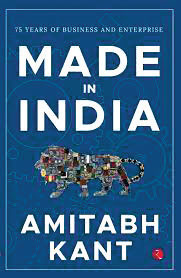A number of interesting books came out over the last couple of months
Historic Relationship
 In this book, a long sweep of historical overview covers the period from the ancient times, wherein there was a flow of ideas, philosophies, trade and commerce between Central Asia and the Indian subcontinent, with Afghanistan acting as a bridge, to the comparatively recent times. From there on, the Pashtun monarchies, the stable rule of the last king Zahir Shah until the Daud Khan coup have also been covered. Destabilizing factors, including the Durand Line, Pashtun nationalism, irredentism, Cold War, the long-term impact of Soviet intervention as well as the US proxy war through Pakistan, and how this led to Islamization and weaponization of Afghanistan have been discussed, writes an old Afghan hand, Lt Gen. R.K. Sawhney, in the introduction to this anthology.
In this book, a long sweep of historical overview covers the period from the ancient times, wherein there was a flow of ideas, philosophies, trade and commerce between Central Asia and the Indian subcontinent, with Afghanistan acting as a bridge, to the comparatively recent times. From there on, the Pashtun monarchies, the stable rule of the last king Zahir Shah until the Daud Khan coup have also been covered. Destabilizing factors, including the Durand Line, Pashtun nationalism, irredentism, Cold War, the long-term impact of Soviet intervention as well as the US proxy war through Pakistan, and how this led to Islamization and weaponization of Afghanistan have been discussed, writes an old Afghan hand, Lt Gen. R.K. Sawhney, in the introduction to this anthology.
AFGHANISTAN: THROUGH THE FOG OF INSTABILITY
Edited by R.K. Sawhney
Rupa Publications, Pg 278, Rs 795
Aatmanirbhar Bharat
 While the book discusses the growth stories of Asia and brings forth policy lessons, there are new challenges that India now faces. The environment in which India is seeking to integrate itself in GVCs (global value chains) is vastly different to when Japan, South Korea or China saw their transformations. While other advanced countries grew and prospered with carbon emissions, India has promised to cut its emissions to net zero by 2070. This is not only a challenge but also an opportunity. Digital technologies are permeating economies like never before. Global trade has been slowing. The economies that can turn these challenges into opportunities will be the most competitive in the future. In addition to reviewing and analysing the evolution of our economic policies, the book also takes a forward-looking view, writes former CEO NITI Aayog, Amitabh Kant, in the introduction to this book.
While the book discusses the growth stories of Asia and brings forth policy lessons, there are new challenges that India now faces. The environment in which India is seeking to integrate itself in GVCs (global value chains) is vastly different to when Japan, South Korea or China saw their transformations. While other advanced countries grew and prospered with carbon emissions, India has promised to cut its emissions to net zero by 2070. This is not only a challenge but also an opportunity. Digital technologies are permeating economies like never before. Global trade has been slowing. The economies that can turn these challenges into opportunities will be the most competitive in the future. In addition to reviewing and analysing the evolution of our economic policies, the book also takes a forward-looking view, writes former CEO NITI Aayog, Amitabh Kant, in the introduction to this book.
MADE IN INDIA: 75 YEARS OF BUSINESS AND ENTERPRISE
Amitabh Kant
Rupa Publications, Pg 210, Rs 595
Old Habits, New Challenges
 The world over, the term ‘bureaucracy’ evokes more negative than positive sentiments. Bureaucracy is usually seen more as a ‘stumbling block’ than a progressively inclined, constructive agency engaged in the task of good governance. While people like Cyril Northcote Parkinson have described a bureaucrat as engaged in ‘wanting to multiply subordinates, not rivals’ and even described how ‘officials make work for each other’; Frank Herbert, the author of Heretics of Dune, a science-fiction novel, has amplified this idea further and gone on to describe bureaucracy in the following words: ‘Bureaucracy destroys initiative. There is little that bureaucrats hate more than innovation, especially innovations that produce better results than the old routines. Improvements always make those at the top of the heap look inept. Who enjoys appearing inept?’ Indian bureaucracy is no exception. This is how former CAG Vinod Rai begins this anthology.
The world over, the term ‘bureaucracy’ evokes more negative than positive sentiments. Bureaucracy is usually seen more as a ‘stumbling block’ than a progressively inclined, constructive agency engaged in the task of good governance. While people like Cyril Northcote Parkinson have described a bureaucrat as engaged in ‘wanting to multiply subordinates, not rivals’ and even described how ‘officials make work for each other’; Frank Herbert, the author of Heretics of Dune, a science-fiction novel, has amplified this idea further and gone on to describe bureaucracy in the following words: ‘Bureaucracy destroys initiative. There is little that bureaucrats hate more than innovation, especially innovations that produce better results than the old routines. Improvements always make those at the top of the heap look inept. Who enjoys appearing inept?’ Indian bureaucracy is no exception. This is how former CAG Vinod Rai begins this anthology.
TRANSFORMING THE STEEL FRAME: PROMISE AND
PARADOX OF CIVIL SERVICE REFORM
Edited by Vinod Rai, Rupa Publications, Pg 227, Rs 595

